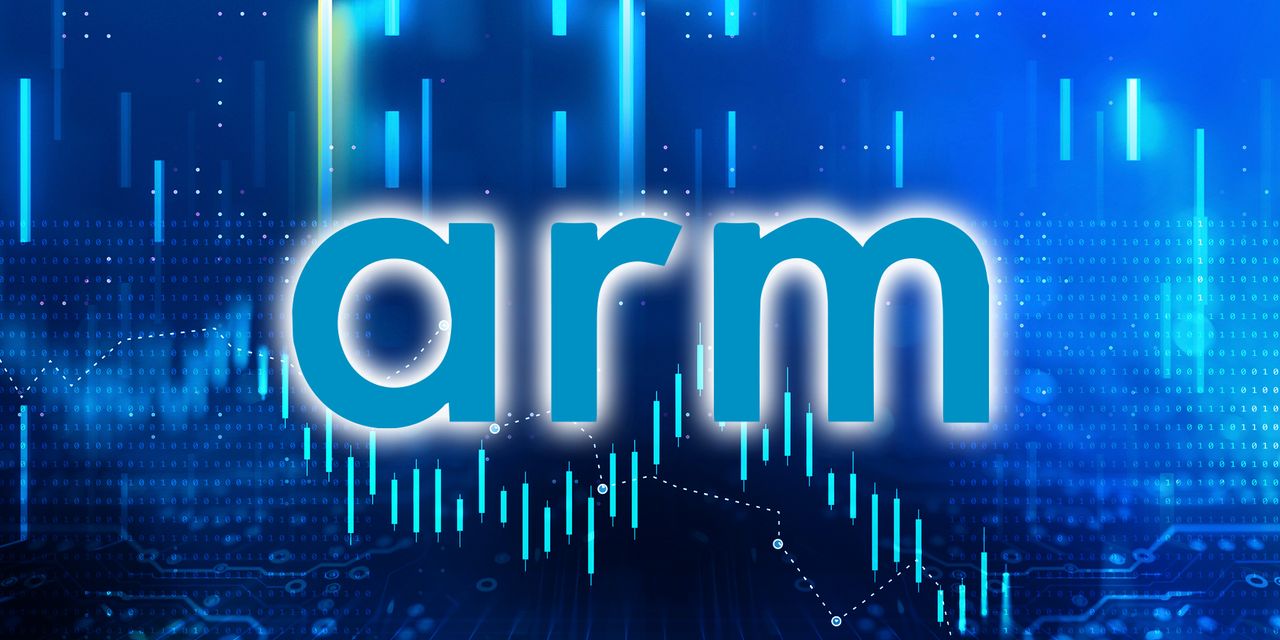The 7 Most Undervalued Safe Stocks to Buy in September 2023
September — widely regarded as the “worst month for the stock market” — is living up to its reputation. In fact, the S&P 500 is down 1% since August, in line with its average 1.1% monthly decline since 1928. Of course, many investors are spooked, unsure of how to invest in an economy on shaky ground. All while other investors seek out some of the most undervalued safe stocks on the market, including the seven below.
Amplify Energy (AMPY)
Amplify Energy (NYSE:AMPY) kicked off September with a bang, climbing 15%. However, there’s still room to run for this oil and gas company. For one, its free cash flow is sufficient and steady, hovering at or above $40 million for the past three years. Two, not only does Amplify have plenty of cash on hand to grow or return value to shareholders but it has also trimmed down debt substantially. That alone is notable, especially when most oil and gas firms remain debt-heavy. For example, the industry’s average debt-to-equity ratio is usually around 0.5, but Amplify’s is below 0.40.
Finally, Amplify’s valuation ratios indicate the company remains undervalued despite its September surge. Its price-to-earnings ratio (P/E) is only 0.70. But, most appealing to value investors, Amplify’s price-to-book ratio is well below 1.00 – meaning its share price doesn’t match its net asset value.
SharkNinja (SN)
SharkNinja (NYSE:SN) snuck onto the stock market in July and is just beginning to capture investor attention. The consumer discretionary stock produces and sells a range of home and personal appliances like ice cream makers, blenders, and hair dryers. Most notably, its recent performance in a down economy is particularly impressive. Sales have risen 20% annually since 2008, and management expects to end the year with $4 billion in revenue.
This week, SharkNinja got its first Wall Street analyst rating from investment banking firm Jefferies. Analysts at the firm rated SharkNinja a Buy and assigned a $67 per-share target to the stock. That’s still 60% above today’s pricing, despite recent stock gains, meaning there’s still upside for latecomers.
Berry Global Group (BERY)
Plastic packaging might not be the most exciting stock prospect, but it’s the reason Berry Global Group (NYSE:BERY) is a safe, undervalued stock. The company produces plastic packaging across consumer, engineering, healthcare, and hygiene sectors. If you take prescription medication, chances are high that Berry produced the bottle.
Berry is also forward-thinking for those concerned about environmental sustainability, generating innovation in carbon reduction and waste management spaces. That commitment to a sustainable future is evidenced by Berry’s “A” rating on environmental initiatives, including a “commitment to reducing the environmental impact of packaging and achieving net-zero emissions by 2050.”
Berry’s in-demand, pervasive products ensure its stickiness in global markets, while its sustainable innovations ensure the company can adapt to changing expectations and remain viable long-term. The company trades at a 0.57 price-to-sales ratio and an equally low 11.82 price-to-earnings ratio.
Intuit (INTU)
Tax time is approaching, making Intuit (NASDAQ:INTU) a decidedly safe stock — especially with more than 80% of Americans filing taxes digitally. Intuit Inc. is a prominent software company specializing in financial software, notably tax and accounting products, including its well-known product, TurboTax. In addition to broad-based tax solutions, the company stands to benefit from the swelling number of gig workers and side hustlers. That market is exploding, expected to hit $455 billion by 2030, and Intuit’s tax solutions uniquely target this demographic.
In its latest earnings report, Intuit reported a net income of $89 million, or 32 cents per share, compared to the net loss of $56 million, or 20 cents per share, in the same period the previous year. Adjusted earnings per share stood at $1.66. The company’s revenue surged by 12% to $2.71 billion from $2.4 billion year-over-year. Despite strong recent performance and relatively high per-share pricing, analysts affirm its Buy rating and indicate the stock remains undervalued.
SK Telecom (SKM)
Telecom stocks tend to be the safest around but usually trade close to fair value. Telecom stocks rarely swell to overblown pricing but, at the same time, don’t often dip into undervalued territory. SK Telecom (NYSE:SKM) is an exception.
SKM is a South Korean telecom company, the largest in the country. Still, it continues innovating in the face of significant market saturation. The company services just under 50% of the South Korean wireless market. But SKM is also pouring cash into artificial intelligence initiatives, investing $100 million into a Google-backed (NASDAQ:GOOG, NASDAQ:GOOGL) multilingual language model startup.
SKM’s drive towards innovation makes the company undervalued based on long-term prospects, but it’s also materially undervalued today. The stock trades at a 0.92 price-to-book ratio and a 10.14 price-to-earnings ratio. The wireless telecom industry’s average price-to-earnings ratio is more than 3x SKM’s, at 30.25 – making this safe stock decidedly undervalued.
Advanced Micro Devices (AMD)
Advanced Micro Devices (NASDAQ:AMD) may not seem overvalued on its own, but it certainly is compared to the broad artificial intelligence sector, considering its long-term potential.
In its second-quarter 2023 earnings report, AMD reported non-GAAP earnings of 58 cents per share, exceeding analysts’ expectations. Revenues for the quarter amounted to $5.36 billion. That beat by a slim 0.67%, but AMD’s future remains bright. Management has an optimistic outlook for the third quarter of 2023. In the report, AMD expects revenues to reach $5.7 billion. That’s a 2.5% year-over-year growth and a 6.5% sequential increase. Consistent, small gains indicate stability, which is critical in an emerging market like AI.
AMD’s strategic acquisitions, such as the purchase of French AI Software Company Mipsology, demonstrate its commitment to enhancing its capabilities in artificial intelligence. The company has been actively focusing on AI, including introducing a new GPU for artificial intelligence in June.
AMD trades at 39x earnings, which seems high, but is undervalued compared to direct competitor Nvidia (NASDAQ:NVDA), which trades at a whopping 108.70.
Danaher Corporation (DHR)
Danaher Corporation (NYSE:DHR) specializes in manufacturing scientific instruments and consumables, operating across three segments: life sciences, diagnostics, and environmental and applied solutions. Although the stock remained relatively flat year-to-date, underperforming the market, recent financials suggest hidden upside potential and undervalued status.
In its most recent earnings report, Danaher exceeded analysts’ expectations by reporting quarterly earnings of $2.05 per share. That’s a tad lower than last year’s period, which is understandable given today’s economic state. However, Danaher beat the estimated $2 per share and posted $7.16 billion in revenue. The beat suggests the company can adapt to shifting economic winds.
August brought a significant development as Danaher announced its plan to acquire Abcam plc (NASDAQ:ABCM), a leading global supplier of protein consumables. The move will streamline Danaher’s life sciences division, improving operational efficiency over time and increasing the company’s margins.
The stock also offers a modest 0.45% dividend yield. Although the yield isn’t groundbreaking, it further reinforces the company’s financial position and commitment to shareholders.
On the date of publication, Jeremy Flint held no positions in the securities mentioned. The opinions expressed in this article are those of the writer, subject to the InvestorPlace.com Publishing Guidelines.
3 S&P 500 Stocks to Sell Before a Crash
U.S. equities markets have had a decent albeit volatile year thus far, as inflation, interest rates, and geopolitical tensions have, at one time or another, weighed on investor sentiment. Let’s have a look at the numbers. Towards the end of July, the S&P 500 index had reached peak annual performance, at one point returning 19.5%. This outperformance has conversely led to the emergence of S&P 500 stocks to sell.
These days, the index is just returning 16.1%. While some sectors have performed well, others have really struggled to cope with the changing macroeconomic environment. In fact, some stocks have severely weighed on the overall index’s performance.
Below I will look through three stocks that are tracked by the S&P 500 index that investors should consider selling in September 2023 as the current state of the global economy has spelled a cloudy outlook for their business models.
Dollar General (DG)
Dollar General (NYSE:DG) is a discount retailer that operates over 19,000 stores in 46 states, primarily targeting low- and middle-income consumers by offering a variety of merchandise at low prices. The discount retailer was able to build its brand in rural and suburban areas where there are few other budgetary shopping options.
Though inflationary pressures began to hit consumers in 2022 with the Consumer Price Index peaking at 9.1% in June of last year, ordinary consumers really began to feel inflationary pressures as they persisted in 2023. Persistent inflation has resulted in consumer in an understandable pullback in consumer spending, even at cheaper outlets like Dollar General. Last week, the discount retailer posted its second-quarter earnings print, and the situation has not changed much from when the company reported on the first quarter in May: transactions growth has slowed, and ‘shrink’ has gone up. The latter is a term trotted out in retail to refer to lost inventory typically due to theft.
Even when Dollar General began to offer groceries or consumables in-store, customers did not necessarily increase their spending. Rather, customers increased their spending on food items but spent less money on non-essentials. Dollar General’s shares have tumbled 48.3% YTD. Until consumers begin to feel inflation has sufficiently been curtailed, equities investors should consider selling the discount retailers’ shares before they hit another bottom. This makes it one of those S&P 500 stocks to sell.
CVS Health Corporation (CVS)
CVS Health Corporation (NYSE:CVS) is a healthcare company that provides pharmacy services, health insurance plans, retail products, and clinical solutions. The company operates over 9,900 retail locations, over 1,100 walk-in clinics, a pharmacy benefits manager with more than 110 million plan members, and a health insurer with over 35 million medical members.
However, CVS Health Corporation has been facing headwinds from the COVID-19 pandemic, which has reduced demand for its pharmacy and retail segments, as well as increased costs for its healthcare services segment. In the first quarter of 2023, the company reported an 11% YoY increase in revenue to $85.3 billion. However, adjusted operating income decreased by 5.1% YoY to $4.4 billion, due to costs associated with the acquisitions of Signify Health and Oak Street Health. Due to these burgeoning costs, healthcare companies also reduced full-year guidance for 2023, 2024, and 2025.
Recent news that insurer Blue Shield of California would drop CVS Health’s Caremark, the pharmacy-benefit manager it currently uses, which negotiates drug prices and wraps in other services such as a mail-order pharmacy. Blue Shield will instead partner with Amazon’s (NASDAQ:AMZN) pharmacy. CVS Health’s shares are down 29.3% YTD. Because the healthcare company is likely to face further challenges as it integrates its recent acquisitions and competition from online pharmacies, investors are perhaps better off if they steer clear. This makes it one of those S&P 500 stocks to sell.
EPAM Systems (EPAM)
EPAM Systems (NYSE:EPAM), like a host of other technology services companies, has been severely impacted by the macroeconomic environment. If you think about it for a moment, the reason why is simple. Companies have become risk-averse and less willing to increase costs for information technology services unless they are particularly transformational. EPAM provides digital platform engineering and software development services globally. These services were clearly in demand in recent years since EPAM had maintained solid top-line growth averaging 25+ over the past five years. Nonetheless, that customer demand has all but dissipated in 2023.
Earlier in the year, EPAM’s management team announced a downward revision of revenue guidance, implying a 2% decline YoY. Similarly, they disappointed investors again in their second-quarter print. The services company revised full-year guidance downward another time, implying a 3% YoY decline in top-line figures. EPAM’s shares have dropped 19.0% YTD, and as the macroeconomic environment remains cloudy, investors should not put their hopes in a speedy recovery for stock.
On the date of publication, Tyrik Torres did not have (either directly or indirectly) any positions in the securities mentioned in this article. The opinions expressed in this article are those of the writer, subject to the InvestorPlace.com Publishing Guidelines.
Buy the Dip: 3 Tech Stocks to Snag Now for Supercharged Gains
According to Fundstrat’s Tom Lee, the U. S. economy has tremendous amounts of green flags to prevent a recession from occurring in the coming years.
In Lee’s opinion, a strong job market, continual decreases in inflation expectations, and falling rent prices are all contributing factors that bode well for stock market growth. The robust labor force growth, averaging 1.9% annually since 2021, has provided a resilient economy during the Federal Reserve’s recent monetary tightening efforts. Moreover, the significant decrease in consumer inflation expectations indicates long-term stability. Lastly, the reduction in rent prices from their 2021 peaks supports overall economic health and stock market growth.
Therefore, these three technology stocks are the ones to buy now for strong returns in the long term.
Cloudflare Incorporated (NET)
Cloudflare Incorporated (NYSE:NET) is an IT service management company that specializes in content delivery network services, cloud cybersecurity, and web domain registration services. Yahoo! Finance reports 25 analysts predicting a 1-year price range on NET stock between $43.00 and $90.00, with a mean of $70.00.
Cloudflare boasts impressive financials with revenue of $308.4 million for Q2 2023, growing at a 31.4% 1-year CAGR, and excellent profitability with a 75.5% gross profit margin. The company has signs of exceptional management, as operational expenditures are well managed evident in a 15.2% levered FCF margin.
NET has made partnerships across a variety of industries for future growth. The company partnered with Cowbell, a cyber insurance provider for mid-sized enterprises. Also, SpaceX has partnered with Cloudflare to improve network speeds on SpaceX’s internet satellite service, Starlink. Another deal with IBM implements Cloudflare’s Bot Management software on IBM Cloud Internet Services (CIS).
NET is a technology stock with long-term upsides due to its impressive financials, projected industry growth, and its ability to develop partnerships across various industries.
Opera Limited (OPRA)
Opera Limited (NASDAQ:OPRA) is a Norwegian conglomerate holding company primarily known for its various desktop and mobile browsers.
OPRA stock is up 133.00% year to date (YTD). The software market is currently worth $338.20 billion and projected to grow to $414.70 billion in 2028. The company reported a quarterly revenue of $94.13 million that grew 20.94% year over year (YOY). Diluted EPS was also reported to be $0.14, which grew by 333.33%, and the net profit margin of 14.38% grew by 291.73%.
Throughout this past year, Opera has made many advancements in integrating AI into its services. A major announcement is the partnership between OpenAI to develop Opera’s AI-generated content (AIGC) ambitions. This gives it access to OpenAI’s market-leading application programming interface (API) and AI models, as well as direct support from OpenAI’s team.
Since this announcement, Opera has released its Aria AI to assist users for research, coding, and customer support. Aria has been released for all of Opera’s major products, including its Opera One (desktop), Opera GX (desktop), Android, and iOS browsers.
Yahoo! Finance reported four analysts in August, all of which rated OPRA stock as a “buy” or “strong buy”. The mean 1-year price target on OPRA stock from these analysts resulted in $20.25, with a low of $18.00 to a high of $23.00.
International Business Machines (IBM)
Founded 112 years ago, International Business Machines (NYSE:IBM) manufactures and sells computer hardware, middleware, and software. Yahoo! Finance reports 16 analysts predicting a 1-year price range on IBM stock between $110.00 and $162.00, with a mean of $143.75.
The global information technology industry is forecast to grow to $11,866.34 billion by 2025 at a 9% CAGR. A range of IT services bolsters the IT sector growth. Also, cloud computing services are likely to drive demand and revenue for IT services.
IBM’s latest AI launch, WatsonX, offers a promising boost to the company’s stock growth. The platform capitalizes on cost-effective, large language models such as ChatGPT, making it accessible for AI adoption for businesses.
Moreover, WatsonX’s versatility in training AI models, generating code, and leveraging large language models positions IBM for substantial market expansion. Collaborations with open-source AI initiatives like Hugging Face further showcase IBM’s groundwork for future plans.
IBM is a must-buy tech stock right now for a good long-term investment because of its strong financials, plans, and forward-looking goals.
On the date of publication, Michael Que did not have (either directly or indirectly) any positions in the securities mentioned in this article. The opinions expressed in this article are those of the writer, subject to the InvestorPlace.com Publishing Guidelines
3 Metaverse Stocks to Sell in September Before They Crash & Burn
Metaverse stocks emerged with a bang a couple of years ago. In fact, Mark Zuckerberg even changed the name of his social media company to Meta Platforms (NASDAQ:META), cementing the idea that the metaverse would be the destination of the future.
And yet, there’s little sign of much follow-through on the concept today. So far, we have seen no killer app for augmented or virtual reality (AR, VR) that would entice the general public to become familiar with the technology.
A positive sign on the horizon, Apple (NASDAQ:AAPL) offers a new augmented reality platform. The metaverse idea is admittedly still in its early days, and the technology could enjoy a quantum leap forward. But, for now, metaverse stocks are a risky place to be, and these three in particular look like strong sells for September 2023.
Roblox (RBLX)
Roblox (NYSE:RBLX) has been a popular metaverse stock. Roblox already has simultaneous users online, making it a logical place to launch a metaverse community.
However, it’s more difficult to prove the amount of appeal beyond its core audience of young users. Further, concerns exist regarding monetization and content moderation of a gaming ecosystem primarily used by minors. For example, investing newsletter The Bear Cave has published various reports detailing alleged shortcomings in Roblox’s protections for children that use Roblox.
More broadly, Roblox may be limited in ever being able to escape its box as a niche gaming ecosystem with rudimentary graphics. The firm continues to grow revenues at an acceptable rate, but its operating losses are ballooning. Roblox simply is not showing operational scale from its growth.
Even though Roblox has a modest devoted audience, it’s unlikely that Roblox can leap to being a mainstream mass-appeal gaming ecosystem. Given the shortcomings of Roblox’s graphics and game engine, the initial metaverse ambitions seem increasingly unlikely to be fulfilled.
Zedge (ZDGE)
Zedge (NYSEMKT:ZDGE) builds social digital marketplaces and competitive games. For example, it has the Zedge Ringtones and Wallpapers app that give access to a wide range of sounds, wallpapers, and emojis for social media.
Some analysts have pointed to Zedge as a potential winner in both artificial intelligence and the metaverse. Last year, Zedge introduced pAInt, a feature that allows users to turn text inputs into images. It’s easy to imagine the multiple ways in which art, wallpapers, and emojis could be used in a metaverse setting as well.
However, despite these potentially interesting features, the business has failed to gain much momentum. For fiscal Q3 2023, revenues grew just 8% to $6.7 million. With this tiny revenue base and modest growth rate, it will be a challenge to position itself as an AI and metaverse stock winner. Not surprisingly, the company has yet to become consistently profitable.
Vuzix (VUZI)
Vuzix (NASDAQ:VUZI) is a company attempting to commercialize smart glasses. These could be used for a variety of VR and AR applications including metaverse communications and gaming.
Vuzix rose to prominence in early 2021 when fund manager Cathie Wood’s Ark Invest started buying heavily into VUZI stock. At the time, traders were optimistic about Vuzix’s potential to create a reasonable business around its flagship product.
Unfortunately, this is failing to materialize. Over the past two years, revenues rose from merely $11.6 million in 2020 to $11.8 million for full-year 2022. So far, the metaverse and AR haven’t moved the needle for Vuzix.
Today, traders might think VUZI stock is a bargain after its big decline. Don’t let the low share price fool you. The company still has a market capitalization of nearly $250 million. That’s a huge figure for a firm with large operating losses, modest revenues, and minimal commercial traction.
On the date of publication, Ian Bezek did not have (either directly or indirectly) any positions in the securities mentioned in this article. The opinions expressed in this article are those of the writer, subject to the InvestorPlace.com Publishing Guidelines
AMC stock continues rally, extends winning streak to three days
Shares of AMC Entertainment Holdings Inc.
AMC,
continued their rally Wednesday, ending the session up 8.9% for their largest single-day percentage gain since Aug. 30, when they gained 16.7%. The stock also extended its winning streak to three days after Friday’s record-low close. AMC shares plunged last week after the movie-theater chain and meme-stock darling filed a prospectus for the sale of up to 40 million shares.
Arm expected to price IPO above forecast range
Arm Holding Ltd. is expected to price its initial public offering above expectations late Wednesday following intense interest.
Following reports that Arm was pricing its initial public offering at $52 a share, a source close to the deal confirmed to MarketWatch that $52 was the expected price.
That puts the chip designer at a $55.5 billion valuation. Previously, Arm had stated a targeted range of $47 to $51.
Over the weekend, several outlets reported that the offering was more than five times oversubscribed.
That followed confirmation by the company recently that Intel Corp.
INTC,
Nvidia Corp.
NVDA,
Advanced Micro Devices Inc.
AMD,
Apple Inc.
AAPL,
Cadence Design Systems Inc.
CDNS,
Alphabet Inc.’s
GOOG,
GOOGL,
Google International LLC, affiliates of MediaTek Inc.
2454,
Samsung Electronics Co.
005930,
Synopsys Inc.
SNPS,
and Taiwan Semiconductor Manufacturing Co.’s
TSM,
TSMC Partners Ltd., which it referred to as “cornerstone investors,” have indicated total interest of about $735 million in ADSs at the same terms as other purchasers.
Read: Arm IPO: 5 things to know about the chip designer central to the AI transition
Shares are expected to begin trading on the Nasdaq under the ticker symbol “ARM” on Thursday.
Dow posts back-to-back drop, S&P 500 climbs after inflation gauge ticks higher
The Dow posted a back-to-back loss on Wednesday after a gauge of consumer inflation for August rose on the back of higher energy costs, while the S&P 500 and Nasdaq Composite ended with modest gains. The Dow Jones Industrial Average
DJIA,
shed about 70 points, or 0.2%, ending near 34,565, according to preliminary FactSet data. That marked its second day in a row of declines. The S&P 500 index
SPX,
added 0.1% and the Nasdaq Composite Index
COMP,
finished at a 0.3% gain. Both the Dow and S&P 500 struggled for direction earlier Wednesday, with both indexes flipping between small gains and loss as investors considered whether the Federal Reserve will be promoted to increase its policy rate any further this year to tamp down inflation further. Its benchmark rate was increased to a 22-year high in July. The consumer price-index for August showed the yearly rate of inflation climbed to 3.7% from 3.2% in July, and up from a 27-month low of 3% in June.
Unity Software’s new game developer fees result in ‘PR disaster,’ stock falls
Unity Software Inc.’s shares fell Wednesday after the app-monetization and game-engine company introduced new fees based on how often a developer’s game is downloaded.
Unity
U,
shares dropped as much as 8% to an intraday low of $35.83 in Wednesday trading following a Tuesday blog post, in which Unity said it was introducing “a Unity Runtime Fee” based upon “each time a qualifying game is downloaded” by a user.
“We chose this because each time a game is downloaded, the Unity Runtime is also installed,” the company said. “Also we believe that an initial install-based fee allows creators to keep the ongoing financial gains from player engagement, unlike a revenue share.”
Soon after the fees were announced, gaming media outlets like Game World Observer, Game Informer, and Rock Paper Shotgun. started following the negative fallout.
Oppenheimer analyst Martin Yang, who has a perform rating on Unity, said that while the fee move helped convert free and lower-tier Unity subscribers into paying subscribers, it may not push them toward other game engines like Epic Games Inc.’s Unreal Engine.
“While Unity’s pricing announcement resulted in a PR disaster for the company yesterday, we doubt it will lead to many developers leaving Unity for other engines,” Yang said.
Wells Fargo analyst Brian Fitzgerald, who set a buy rating and a $54 price target, said in a note following the post that while developers “voice outrage online,” Unity’s price and value “has long favored developers.”
Unity Runtime matters, the analyst noted, because it is the code that allows “Made with Unity” games to work at scale. Fitzgerald added that Unity’s effective “take rate” still remains well below Unreal Engine’s 5% royalty.
Of the 28 analysts who cover Unity, 18 set a buy-grade rating, eight set hold ratings, and two set sell ratings, with an average price target of $46.67.
Unity shares are up 30% year to date, compared with a 16% rise on the S&P 500 index
SPX,
and a 32% gain on the tech-heavy Nasdaq Composite
COMP.
Back in August, Unity raised its forecast for the year, following better-than-expected results.
Oil futures end lower as demand worries outweigh forecasts for supply deficit
Oil prices settled lower on Wednesday, shaking off earlier gains fueled by a forecast from the International Energy Agency for potential global supply deficit in the fourth quarter. The latest U.S. inflation reading ran on the “hot side,” especially on the core figure, which will “bolster the case for a ‘higher for longer’ Fed policy rate outlook, said Tyler Richey, co-editor of Sevens Report Research. That raises the threat that the central bank “chokes off growth and sends the economy into recession,” which is never a good scenario for oil demand. October West Texas Intermediate crude
CLV23,
fell 32 cents, or 0.4%, to settle at $88.52 a barrel on the New York Mercantile Exchange after ending Tuesday at their highest front-month contract price of the year so far.








